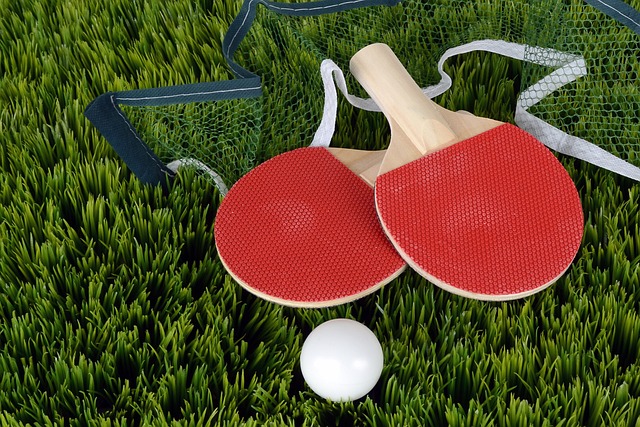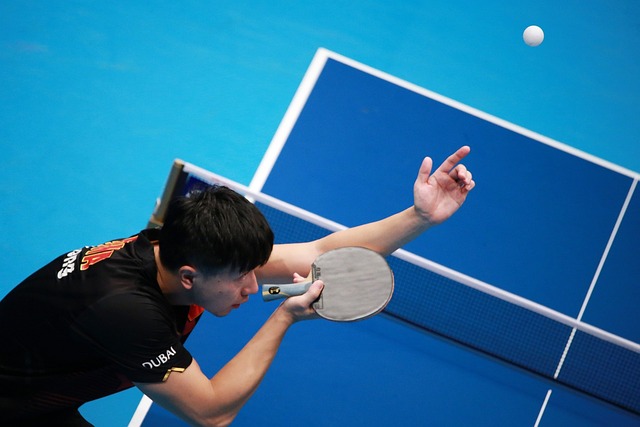Tennis is played on a larger court with a net, while table tennis (ping pong) is played on a small table with a lightweight ball.
The Basics of Tennis

Tennis, often regarded as the “sport of kings,” is a classic and enduring game played by millions around the world. The fundamentals are simple: two players or teams stand on opposite sides of a rectangular court, separated by a net. The objective? To hit the ball over the net into your opponent’s side while avoiding their return shots.
A tennis match typically consists of three main components: serving, rallying, and scoring. Serving kicks off each point, with one player hitting the ball from behind their baseline to start play. From there, it’s all about quick reflexes and strategic shot placement.
Players can choose to hit forehand or backhand shots depending on their dominant hand and personal preference. A forehand stroke involves swinging at the ball with your palm facing forward, while a backhand stroke requires turning your wrist so that your palm faces backward.
The power and precision required in tennis make it an intense physical activity that demands agility, speed, strength, and endurance from its players. Whether you’re watching professionals battle it out in grand slam tournaments or enjoying a friendly match at your local club, tennis offers excitement for both participants and spectators alike.
The Basics of Table Tennis

Table tennis, also known as ping pong, is a fast-paced and exhilarating sport that can be played by people of all ages and skill levels. The game originated in England in the 19th century and has since gained popularity worldwide.
To play table tennis, all you need is a table, two paddles (also called rackets), and a lightweight ball. The objective of the game is to hit the ball over the net onto your opponent’s side of the table while following certain rules.
Unlike tennis, which is usually played outdoors on a larger court with a heavier ball, table tennis is played indoors on a specialized table. The dimensions of the table are regulated for official competitions to ensure fair play.
In table tennis, players use quick reflexes and strategic shots to outmaneuver their opponents. The small size of the playing area requires players to have precise control over their shots and movements.
Table tennis matches are typically fast-paced and can be quite intense. Players must anticipate their opponent’s moves while being mindful of their own positioning on the table.
Tennis Vs. Table Tennis – Key differences
| Characteristic | Tennis | Table Tennis (Ping Pong) |
|---|---|---|
| Sport Type | Outdoor or indoor racquet sport played on a larger court | Indoor racquet sport played on a smaller table |
| Court Size | Full tennis court with singles and doubles areas | Smaller table, approximately 9 feet by 5 feet |
| Equipment | Tennis racquet, tennis ball | Table tennis racquet (paddle), lightweight ball (ping pong ball) |
| Playing Surface | Hard, grass, clay, or synthetic courts | Smooth table surface with a net in the middle |
| Ball Characteristics | Larger, heavier, and less bouncy tennis ball | Smaller, lightweight, and highly bouncy table tennis ball |
| Scoring System | Points scored in sets and games (e.g., 15, 30, 40) | Points scored in sets, games, and rallies |
| Serving Rules | Overhead serves from behind the baseline | Underhand serves, must hit the table on both sides |
| Game Speed | Slower-paced, longer rallies | Faster-paced with quick exchanges and volleys |
| Physical Demands | Requires more running and endurance | Emphasizes reflexes, agility, and precision |
| Strategy | Strategy often revolves around court positioning and shot placement | Strategy focuses on quick reaction time, spin, and placement |
| Competitive Levels | Professional and amateur levels with various tournaments | Competitive at amateur and professional levels, including the Olympics |
| Accessibility | Available for players of all skill levels, and often as a recreational activity | Widely accessible and played in homes, schools, and clubs |
| Team Play | Played as singles or doubles with team events in professional tennis | Often played as singles or doubles, with team events in table tennis |
Tennis Vs. Table Tennis – Scoring and Rules
Scoring and rules in tennis and table tennis (ping pong) have several differences due to the variations in court size, equipment, and game dynamics. Here’s a comparison:
Tennis:
- Scoring System: Tennis uses a unique scoring system based on points, games, and sets. A typical tennis match is best of three or five sets. A set consists of a sequence of games, and a game consists of points. The scoring sequence is “15,” “30,” “40,” and “game” (with “deuce” and “advantage” for tied scores).
- Serving: Players serve from behind the baseline, over the net. They have two chances (first and second serve) to deliver a valid serve. The serve must land in the opponent’s service box diagonally across the net.
- Winning a Set: To win a set, a player/team must win at least six games (with a margin of two games) or win a tiebreak if the score is 6-6.
- Winning a Match: To win a match, a player/team must win the majority of sets (e.g., 2 out of 3 or 3 out of 5 sets).
Table Tennis (Ping Pong):
- Scoring System: Table tennis uses a simplified scoring system. Matches are typically played to a certain number of points (e.g., 11 or 21). The first player/team to reach that number wins the game.
- Serving: Players serve from the right side of the table to the diagonally opposite side. The ball must be thrown up at least 6 inches and hit the server’s side first, then the opponent’s side.
- Winning a Game: To win a game, a player/team must reach the designated number of points (e.g., 11) with a margin of at least 2 points.
- Winning a Match: Matches are typically played as a best-of-5 or best-of-7 games. The player/team that wins the majority of games wins the match.
These are the fundamental differences in scoring and rules between tennis and table tennis. Tennis employs a complex scoring system and typically features longer matches, while table tennis uses a simpler point-based system with quicker-paced games.
Image Credits
Featured Image By – djimenezhdez from Pixabay
Image 1 By – Diego Ortiz from Pixabay








